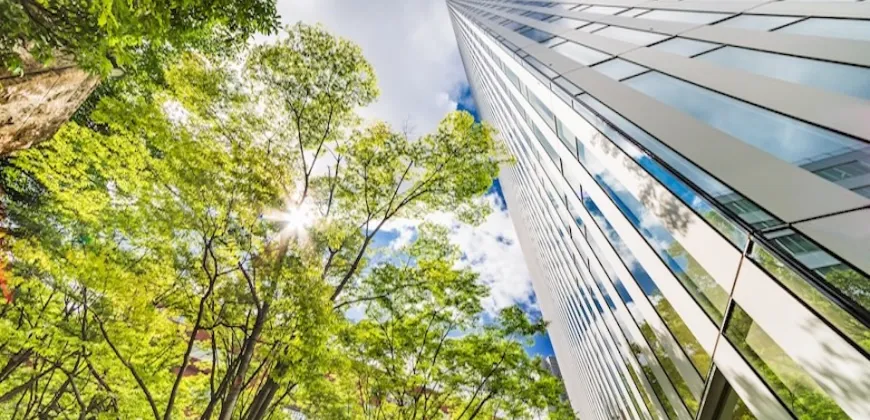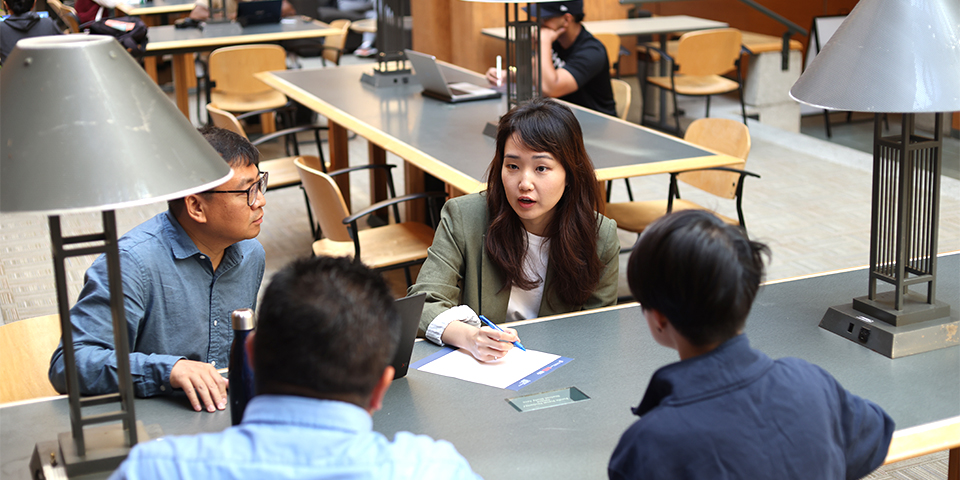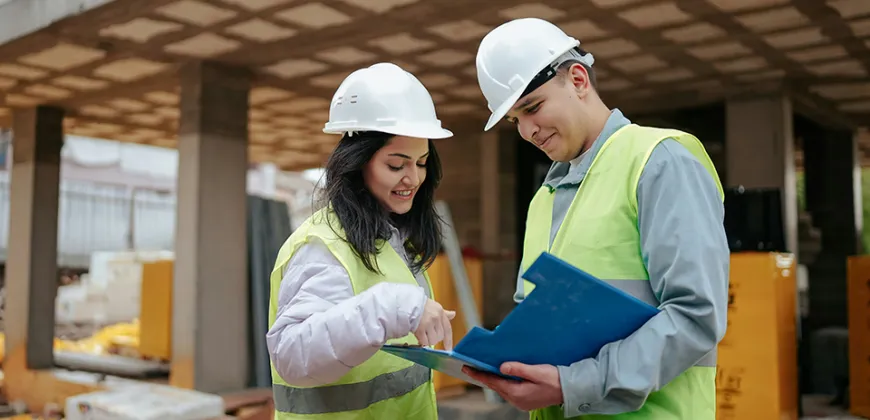Research: Climate Resilient Buildings

While working as a Sustainability Research Scholar during his Master of Engineering Leadership, Tsubasa Bolt developed a set of policy recommendations to make it easier for strata owners living in residential buildings on the UBC campus to install climate-resilient heating and cooling solutions.
The Sustainability Scholars Program is open to all UBC graduate students, including those in the Master of Engineering Leadership (MEL) and Master of Health Leadership and Policy (MHLP).
Students apply to the program and, if they are accepted, are matched with a partner organization where they work on a research project connected to sustainability. We talked with Tsubasa Bolt, a student in the High-Performance Buildings program, about his experience:
What project were you hired for?
I was hired to work with UBC’s Sustainability & Engineering Department to review technical options to help strata residential buildings within UBC’s jurisdiction be more climate change resilient and emit lower carbon emissions.
I was asked to review current policies with the aim of reducing the barriers that make it challenging for owners to add cooling infrastructure or make their heating systems more efficient.
This project was an opportunity for me to challenge myself by working on a project that was substantially different from the building systems design work I did as a mechanical engineer.
What technical solutions did you explore?
I did a general literature review of the technologies and solutions that are available to retrofit buildings to be more climate resilient, looking at both passive and active solutions.
The UBC Green Building Action Plan mandates that when examining options to achieve a “comfortable indoor environment under predicted future climate conditions” you must explore passive solutions first.
However, my conclusion was that it would be extremely hard to implement passive options – such as exterior shading and natural ventilation – because stratas require a 75% majority vote of owners to implement solutions that impact the building as a whole.
That led to mechanical solutions that individual owners could pursue. After examining cost, feasibility and performance I came to the conclusion that a split heat pump system is a good choice.
The technology is widely available and most condos have balconies where the pumps can be installed. They are far more efficient than electric baseboard heaters and also provide cooling, which is of increasing importance with the expected increase in extreme heat events.
What other research contributed to your recommendations?
Current policies in most municipalities make it cumbersome for homeowners in multi-family dwellings to install a heat pump. They must get permits from the municipality and must also work with their strata council and contractors to ensure the installation meets requirements.
I researched policies in other jurisdictions, including the City of Vancouver, which recently streamlined their process so that homeowners no longer need to obtain a mechanical permit before installing a heat pump.
I also conducted interviews with members of the UBC Campus and Community Planning, industry consultants with experience in strata projects, as well as a current owner in a strata building at UBC who is overseeing a program like this in his building.
What were your recommendations?
I proposed several recommendations. First, I recommended that UBC consider streamlining the permitting process. Given that heat waves are expected to happen with more frequency, it’s easy to imagine a spike in demand for green infrastructure like split heat pumps.
Streamlining the permitting process will keep the administrative capacity from being overwhelmed and make it easier for owners to install solutions while mitigating technical risks.
I also developed detailed checklists, one for strata councils and one for owners, that outline the responsibilities of councils and owners and the steps required to install a heat pump solution.
The hope is that this would serve as a guide for both strata councils and owners when pursuing retrofit projects of this nature.
Did your MEL classes prepare you for this work?
Definitely. My first-semester course in green building practice looked specifically at how the industry is incorporating climate change resilience in its design and adopting more aggressive sustainability targets.
One of our assignments was to critique the UBC Green Building Action Plan. So going into my work with Sustainability & Engineering department, I was very familiar with this standard, which certainly helped me understand the context.
You’re also involved in third quadrant design. What can you tell us about this group?
Third Quadrant Design is an undergraduate student engineering design at UBC that’s competing in the US Department of Energy Solar Decathlon Build Challenge and is in the process of designing and constructing a net-zero emissions building for the competition.
I volunteered as a mentor with the mechanical sub-team, advising them on how to prepare construction documents.
As a mentor, my role was not to get involved in the decisions they were making but to offer advice on how to put together the construction documents needed for permitting. I also offered guidance on basic principles of plumbing and HVAC design.
Anything else you want to add?
The MEL’s strength is its intersection of business and leadership courses with technical courses. My personal goal is to develop the skills to get the most out of an integrated design team.
In my professional work, I was often frustrated by the siloed nature of each of the engineering disciplines within building design, and how each discipline tended to keep to its own lane.
Even in firms that marketed themselves as leveraging an integrated design process, I observed that this was hard to achieve in practice. What I realized is that to get multidisciplinary teams to perform, you really need to understand organizational behaviour and how to bring people together.
During the Sauder classes, I was able to identify some of the leadership challenges I wrestled with in my work. I particularly valued discussions of strategy and organizational behaviour.
I have enjoyed learning about and reflecting on the psychology of teams and how people in a group are often reluctant to share controversial ideas or concepts that go beyond the group’s shared understanding.
This is the antithesis of the goals of an integrated design team, where you have to rely on specialists in their field.
In building design, you can have the best technical people, but no matter how good they are and how well-intentioned, at the end of the day, if you have a people problem, the team will not be able to meet its technical objectives.
The MEL is definitely broadening my horizons in the technical aspects of building design, while also giving me skills in managing people and optimizing team performance.




